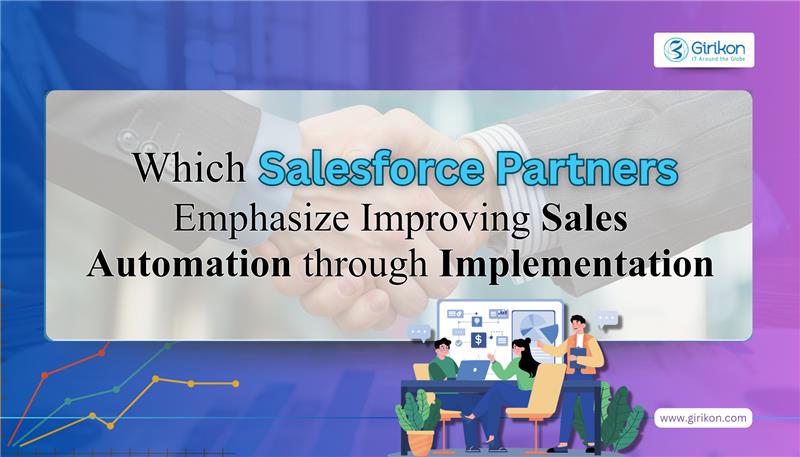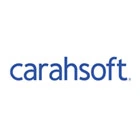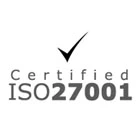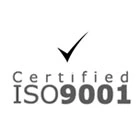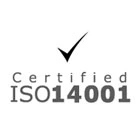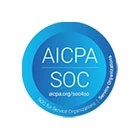Implementing the Salesforce is no doubt a fruitful opportunity for businesses worldwide. Why? Because it streamlines sales, delivers powerful insights, and enhances customer relationships. However, Salesforce’s potential alone is not enough to promise its success. As a result, many Salesforce projects stall or stumble.
So, where does the problem lie? Communication!
Poor communication results in disruptive issues no matter if you’re rolling out Salesforce across a global enterprise or a small team. That's why a business should hire Salesforce implementation partner to address communication challenges and build a more agile and collaborative environment.
Why Communication Challenges Appear in Salesforce Implementation
Well, there are various instances that lead to communication challenges during Salesforce implementation such as:
1.Lack of Clear Objectives
The initial phase of any project is critical as it is what defines the groundwork for success and failure. However, not having a shared objective and a clear understanding of what the implementation can achieve, the outcome can easily stray from expectations. This leads the way towards misalignment between technical execution and business goals—thus bringing confusion across the organization.
2.Cross Departmental Silos
When departments operate in silos, the chances of hindering the effectiveness of a project like Salesforce grow high. Because all departments have different goals and objectives. While a sales rep focuses on lead conversion, customer service executive prioritizes case resolution, and marketing agent optimizes campaign performance. This fragmented vision leads to poor Salesforce implementation.
3.Lack of Documentation
When not creating a solid trail of what’s been decided, why it’s been decided and how things are supposed to work, team members are left to interpret things on their own. This slows down communication, increases time spent on guesswork, and leads to inconsistent understanding between developers and stakeholders.
4.Insufficient Stakeholder Involvement
Another silent killer of a smooth Salesforce implementation is insufficient stakeholder involvement. When stakeholders don’t participate, the technical team may end up building a system that doesn’t actually match their business’s requirements. This creates tension between business users and the project team, thus making communication even more significant than ever.
5.Inadequate Training & User Onboarding
Absolutely inadequate training and poor onboarding leave a scar on Salesforce implementation. Users with no proper understanding of Salesforce are more likely to misuse it. Moreover, most of the time, they rely heavily on the support team to make the system run. Further, it makes it hard for the implementation team to iterate and improve the system.
How to Fix Communication Challenges within Salesforce?
You don’t need to do anything, just hiring or getting support from the best Salesforce consultants can help you avoid the most common pitfalls. Here is how experienced consultants can eliminate the key factors that lead to communication challenges in Salesforce implementation.
Factor 1: Lack of Clear Objectives
Consultant's Solutions:
Discovery Workshops—Consultants conduct discovery sessions with stakeholders across departments to collect pain points, goals, and success criteria.
Documented Business Objectives—They note down the strategic goals using tools like Solution Design Docs and Business Requirement Documents (BRDs).
Success Metrics—In the beginning of the process, consultants define KPIs, letting everyone learn how success will be measured.
Factor 2: Cross Departmental Silos
Consultant’s Solutions:
Stakeholder Alignment Sessions—With cross-functional meetings, Salesforce consultants ensure all departments are aligned on business objective and share vision.
Process Mapping Across Teams—They map down the end-to-end process for each team to let them understand how their workflow connects within Salesforce.
Unified Data Models—They create unified data models for all team members across department to mitigate duplication and enhance collaboration.
Factor 3: Lack of Documentation
Consultant’s Solutions:
Living Documentations—The best Salesforce consultants build dynamic documentation leveraging tools like Notion, Lucidchart, and Confluence. This helps them capture decision logs, configurations, and workflows.
Knowledge Transfer—Consultants document every relevant step, information, and guide for team members to sustain and scale the system post launch.
Change Logs & Audit Trails—Not just the consultants implement change management logs but also track everything that was changed, for what reason and by whom.
Factor 4: Insufficient Stakeholder Involvement
Consultant’s Solutions:
Stakeholder Mapping & Roles—Upon identifying and finalizing key players, Salesforce consultants assign them roles that could be decision making, SME, and approving.
Regular Steering Committee Review—They prioritize to take consistent feedback via progress reports, demos, and stakeholders review meetings.
User-Centric Design Thinking—In order to build a user-friendly interface, Salesforce consultants put the end user in mind, encouraging stakeholders to add their inputs during prototypes, mockups, and testing phase.
Factor 5: Inadequate Training & User Onboarding
Consultant’s Solutions:
Onboarding Materials & Walkthroughs—To ensure every new or old user runs Salesforce to its full potential, Salesforce consultants build user guides, video tutorials, and in-app walkthroughs. That’s how they support self-learning and encourage user adoption.
Post-GO-Live-Support—Various Salesforce implementation companies provide “hypercare” support. This refers to essential support, i.e., QA sessions, help desk escalation, and office hours paths provided to businesses after Salesforce’s launch—to boost comfort and confidence within the system.
Role Based Training Programs—Besides, all these support and training, Salesforce consultants ensure to create tailored training, keeping in mind the essential and unique need of each user group, i.e., Sales, Marketing, Support, etc.
To Sum it Up!
Having communication challenges during Salesforce implementation is common. But what is not common is your determination to turn these challenges into some amazing opportunities.
And just as we mentioned, this would only be possible when you hire Salesforce implementation partner. With their support & assistance, you can easily resolve all bottlenecks, thus getting the best out of Salesforce CRM.
Looking for personal assistance? Schedule a meeting with our experts and learn how they can help embrace the Salesforce implementation.
Salesforce is the world's most used CRM, offering a variety of communication features. SMS texting is one of those techniques, however, its capabilities are limited. For instance, Salesforce SMS makes it tough for your company's marketing, sales, and service teams to work seamlessly across the customer journey. This frequently leads to redundant messaging, communication issues, inefficiencies, and a diluted customer experience.
A third-party Salesforce SMS integration is the most effective way to improve your CRM's effectiveness. With a 100% native integration, your audience will receive SMS text messages instantly, and your business will acquire more leads, improve productivity, and boost sales.
Choosing the best Salesforce SMS integrations can be quite a task because of the plethora of options available. Each has a unique style, feel, and set of functionalities. This article gives you the information you need to home in on the best option for your business.
Why is a native Salesforce SMS integration important?
SMS providers' interpretations of what native integration means can differ greatly. Unsurprisingly, the outcomes they provide differ. The best native SMS integrations also contain enterprise-grade features designed for scalability and dependability that work seamlessly within your Salesforce CRM. This is because they are created with Salesforce development tools and operate easily within existing CRM settings.
When choosing a Salesforce SMS messaging platform, prioritize the following features:
100% Native Salesforce Integration
Interoperability is key to successful Salesforce SMS integration. Native integration refers to apps that are embedded into the Salesforce development environment. Using these Salesforce-compatible tools delivers great performance and ensures enterprise-grade security.
While several SMS messaging platforms say they are native to Salesforce integration, it is important to understand clearly what is being offered. Many a time, these so-called integrations are just connectors that sync data between Salesforce and the application.
Because each request (both incoming and outgoing) is treated as a transaction, the total cost of ownership can quickly accumulate. To add to that, lag in message delivery can be a deal-breaker for businesses.
Many of the SMS messaging platforms that you will come across are not truly native to Salesforce. They send SMS messages through the vendor's infrastructure rather than your own. By sending and receiving messages straight from your existing database, true native integration removes security threats, delays, and unnecessary manual labor.
Ease of Use
Apps that are natively integrated with Salesforce do not require additional logins or training. Users who are familiar with Salesforce can benefit from a native integration without having to learn a new system.
When everyone is familiar with the interface and functionality, your staff will be more productive.
Enterprise-grade Security
Native integration with Salesforce also brings with it strong security features and allows for granular access to the system. These enterprise-grade capabilities purpose-built for large enterprises are very useful for smaller businesses. It's extremely important for a messaging platform to adhere to Salesforce’s stringent security standards.
Data storage and processing occur inside the bounds of your current Salesforce instance. Local control greatly decreases the likelihood of a security breach or other data-related challenges.
Improved Performance
Because native apps run fully within the Salesforce console, they are more efficient and less prone to errors or incompatibilities. You receive the added features of a sophisticated platform while benefiting from Salesforce's famed uptime and performance.
Businesses that use native Salesforce text messaging integrations located in a secure cloud environment lower their risk of downtime due to provider disruptions. Because native apps operate within Salesforce, database exchanges are not required.
Uncompromised Compatibility
Native SMS apps interact with other Salesforce apps seamlessly. Furthermore, sophisticated APIs and custom-coding capabilities provide access to virtually endless options.
You can integrate with existing CRM software and solutions or develop your own. Regardless of your specific requirements, you can be confident that they will be seamlessly in the Salesforce ecosystem.
CRM Services: Custom Objects
One of Salesforce's most useful characteristics is its data processing mechanism. Salesforce uses native apps to classify each data type as a separate entity. This means that contacts, phone conversations, and email messages are all treated as distinct entities in the CRM database.
Identify a Salesforce SMS platform that supports custom objects. This improves system efficiency, increases data security, and simplifies the generation of reports, triggers, and custom actions.
SMS Messaging Service and Support
Incorporating SMS messaging within Salesforce provides significant benefits. However, effective initial setup and continuing maintenance are critical to maximizing your investment.
Look for vendors who have developed their own technology rather than merely connecting to another SMS API. SMS platforms that are genuinely enterprise-grade have direct carrier connections and provide an in-house developed SMS API. This not only ensures better performance and cost but also ensures that your IT team can speak with a skilled developer in order to correctly integrate the SMS platform.
The right SMS provider will have in-house experts to assist with the integration of new services or the transfer from an existing one. Enterprise-grade SMS platform should ideally come with intuitive wizards to guide users through typical tasks and assist administrators in troubleshooting issues.
Enterprise Scalability and Pricing
If you're going to interface with an SMS provider, make sure you choose a vendor with expertise working with large organizations and direct carrier connections, as well as volume pricing as you scale.
Many SMS messaging providers typically service small businesses and are unfamiliar with the special challenges that come with high SMS traffic, such as bulk deliverability and queueing issues from rival campaigns. Make sure you choose a provider whose platform is designed to manage high demand and has cloud-based features to increase bandwidth and processing power.
Pricing varies widely because many SMS providers build a software layer on top of another provider's SMS API, making them effective resellers with limited ability to give deep volume discounts as the business grows. Consequently, the best SMS platforms are the ones with direct carrier relationships.
Choose GirikSMS for Salesforce SMS Integration
If you want a service with all of these features, GirikSMS is the best option. Our enterprise-grade SMS messaging platform is designed for large businesses while remaining user-friendly for small ones.
GirikSMS is the ideal Salesforce SMS messaging solution for managers who value personalized customer engagement at scale. With our platform, you get 99.9% uptime, direct carriers, and 100% native Salesforce SMS integration.
Our completely in-house technology allows for seamless SMS messaging with shortcodes as well as 10DLC, all in the same thread. Businesses can send bulk SMS messages to hundreds of thousands instantly and follow up with one-on-one text conversations at scale.
GirikSMS has direct carrier connections to cut out the middlemen. This improves SMS deliverability by decreasing potential sources of failure and dependency on third parties. Our carrier partners also provide a cheaper cost structure, allowing us to provide much lower prices than the competition.
We provide local tech support, and our support staff and engineers understand the specific requirements of businesses. Our industry-leading platform capabilities are cutting-edge while remaining the most cost-effective option for Salesforce SMS messaging.
What can GirikSMS do for your organization?
If you're ready to embed SMS messaging capabilities into your existing tech stack, our experts will be happy to demonstrate our platform's native Salesforce SMS integration. We will demonstrate how the industry's leading enterprise-grade SMS messaging platform can help you grow your business. Sign up for a free 30-day trial today.

 +1-480-382-1320
+1-480-382-1320 +44-7428758945
+44-7428758945 +61-1300-332-888
+61-1300-332-888 +91 9811400594
+91 9811400594
